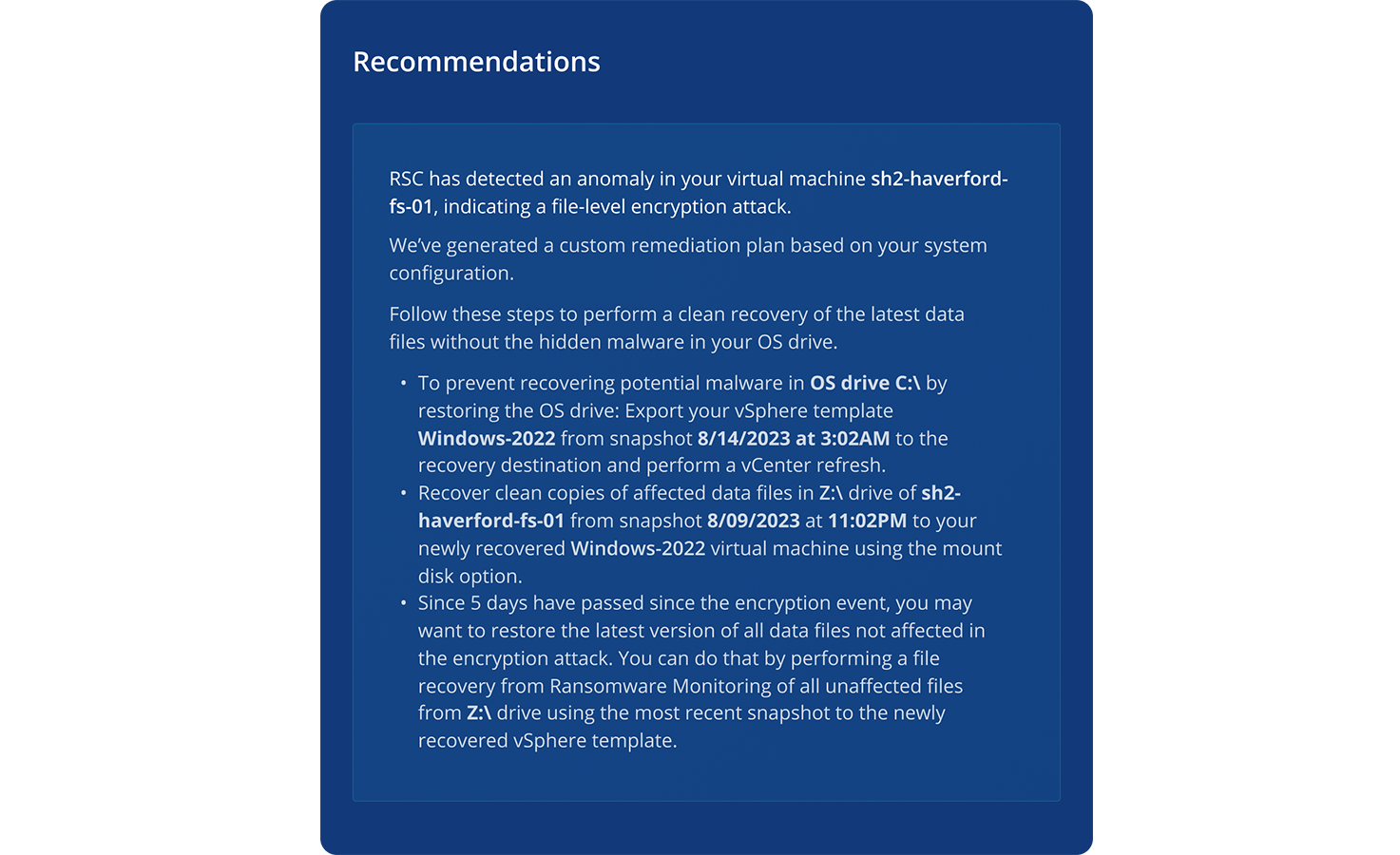Today, cyberattacks pose the most significant threat to an organization’s data. The Spring 2023 Rubrik Zero Labs report, based on research from over 1,600 IT and Security professionals, revealed that 99% of IT and security leaders were informed of at least one attack in their own environment in 2022. Recovering from such attacks is a complex endeavor, demanding not only skilled professionals but also specialized cyber recovery tools that can efficiently guide IT teams through the necessary steps for a faster and safer recovery.
The Challenge With Cyber Recovery
Cyber threats to organizations manifest in a multitude of ways, each posing unique challenges. For example, cyber attacks are increasingly targeting VMware infrastructure, including host VMs, which means crucial monitoring and alerting tools can go completely dark. This prompts IT teams to question, “Why wasn’t I alerted of the outage?” and “What's the extent of the attack?”. On the other hand, when a file-level attack hits, IT teams tend to lose trust in the underlying operating system, due to potential backdoors and rootkits that may reintroduce malware into the environment. In such scenarios, IT teams find themselves asking the question “How can I recover the most recent, clean data without reintroducing malware from an operating system that may be compromised?”. Organizations must be prepared to effectively manage diverse attack scenarios to ensure cyber resilience.
Imagine if you had a simple way to address these challenges - a tool that offers insightful, context-aware guidance, streamlining the Cyber Recovery process. Picture yourself being guided through the chaos, with the ability to detect the blast radius of the attack and being shown a clear path to a clean recovery with minimal data loss. At Rubrik, we identified this as an opportunity to integrate generative AI capabilities into the Rubrik Security Cloud platform, designed to assist customers to navigate complex cyber recovery scenarios with confidence and clarity.
Introducing Rubrik AI-Powered Cyber Recovery
Rubrik AI-Powered Cyber Recovery will be designed to help organizations accelerate their time to recover from a cyber attack through comprehensive task lists and guided workflows tailored to each recovery scenario, powered by generative AI. This unique approach aims to streamline decision-making for organizations during a cyber incident and respond faster to emerging threats.

Figure 1: Step-by-step recommendations offered by Rubrik AI-Powered Cyber Recovery
Rubrik AI-Powered Cyber Recovery will be designed to:
Detect VM-Level Anomaly Alerts: Get notified when VM-level attacks happen, which is particularly valuable when crucial monitoring and alerting tools fail during the attack. The solution also aims to provide clear guidance on how to recover from the last known clean snapshot.
Minimize Data Loss Using the Cleanest and Most Recent Data: Get detailed remediation steps on which snapshots or files to select for a clean and successful recovery, and to achieve the lowest Recovery Point Objective (RPO). The solution also helps with proactive protection of gold master vSphere templates for secure virtual machine recovery when a cyber incident occurs.
Speed Up Recoveries Using Generative AI recommendations: Streamline recoveries with AI-generated task lists and guided workflows tailored to specific recovery scenarios. IT teams will be able to reduce the load and complexity of decision-making that needs to happen during a cyber incident.
Rubrik AI-Powered Cyber Recovery will be on display at booth #207 at VMware Explore 2023, taking place this week in Las Vegas. Ready to learn more? Visit our webpage.
SAFE HARBOR STATEMENT:
Any unreleased services or features referenced in this document are not currently available and may not be made generally available on time or at all, as may be determined in our sole discretion. Any such referenced services or features do not represent promises to deliver, commitments, or obligations of Rubrik, Inc. and may not be incorporated into any contract. Customers should make their purchase decisions based upon services and features that are currently generally available.
